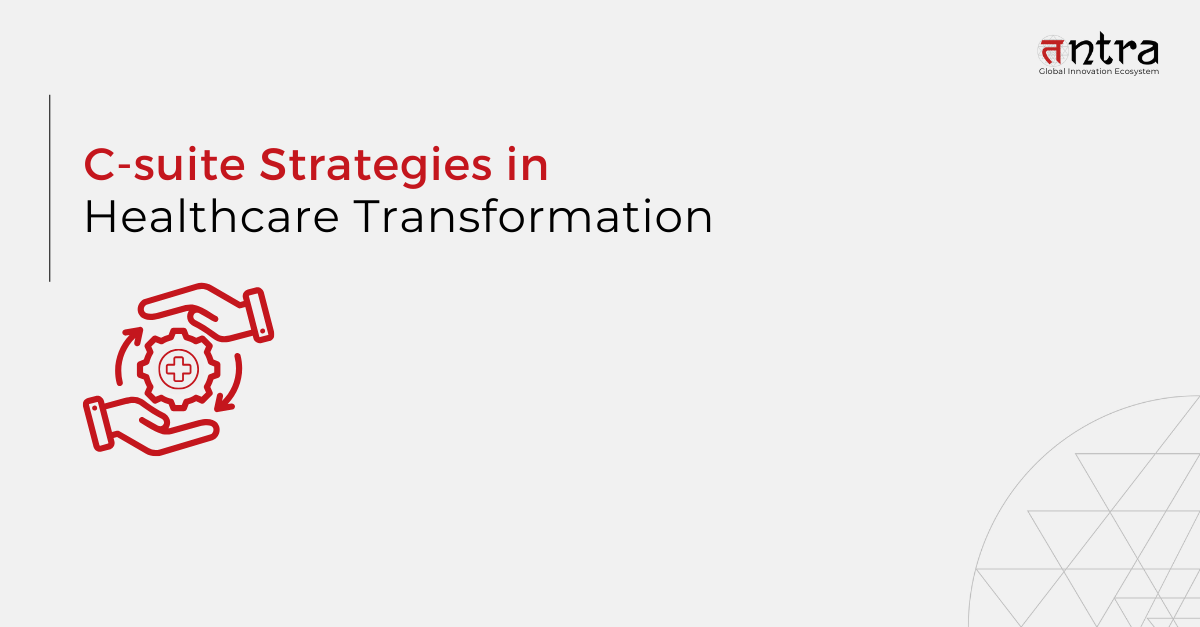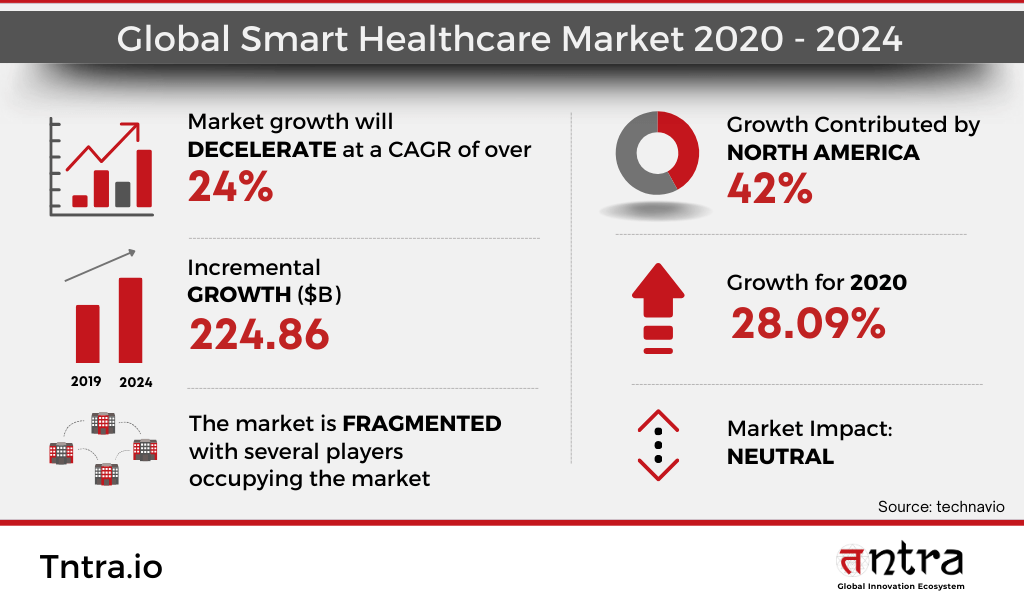
C-suite Strategies in Healthcare Transformation
Table of Contents
ToggleIn the healthcare industry, C-suite executives work together to optimize hospital operations, improve patient care, and maintain financial stability. They are responsible for operational effectiveness, resource allocation, healthcare transformation, C-suite strategies, and strategic planning. C-suite executives need to lead through change, cultivate a patient-centric culture, and give priority to the patient experience in order to achieve healthcare transformation. Retaining focus on key priorities, negotiating complex regulatory environments, and utilizing technology to enhance organizational performance and patient outcomes are all components of effective leadership. Read the article to learn more.
A great illustration of a healthcare company that has successfully applied C-suite tactics to promote change is Kaiser Permanente. When it comes to patient-centered care and innovation, the health system has led the way. The patient experience has always been given top priority at Kaiser Permanente. They have reduced expenses, enhanced patient outcomes, and optimized operations by utilizing data analytics. To enhance care coordination and lower medical errors, they have adopted electronic health records, or EHRs.
The C-suite strategies of Kaiser Permanente have produced outstanding outcomes. In comparison to other healthcare providers, the health system has regularly achieved reduced costs and has received good ratings in patient satisfaction surveys. Furthermore, Kaiser Permanente has had success with improving population health outcomes and managing chronic conditions.
Kaiser Permanente has shown how C-suite leadership can significantly improve the healthcare sector by emphasizing patient-centricity, data-driven decision making, technology adoption, value-based care, and workforce development.
(Source: Kaiser Permanente)
The State of Healthcare Transformation in the 21st Century

A 2021 report on digital health, based on interviews with 399 health executives, states that 81% of these executives said their company’s digital transformation is progressing at an accelerated pace, and 93% said their company is innovating with urgency and calling for action in 2021.
The global healthcare IT market was worth USD 303.4 billion in 2022. However, it’s expected to reach $974.5 billion by 2027, with a CAGR of 19.8% from 2022 to 2027.
The use of new medical technology is growing in popularity, particularly among Gen Xers and Millennials. Today, 68% of patients anticipate being able to schedule appointments online, a 17.2% increase from 2016. In fact, more than half stated that they would swap practices for online appointment scheduling.
C-Suite Strategies for Healthcare Transformation
C-suite executives work together in a healthcare environment such as a hospital to guarantee the efficient operation and superior performance of the establishment. Together, C-suite leadership in healthcare transformation decides on matters such as managerial responsibilities, standards of patient care, hospital expansion plans, and money allocation. Improving patient care, staff happiness, and the hospital’s financial stability are all mutual goals.
Collaboration amongst C-Suite executives is essential in a hospital. To effectively manage resources, for instance, the Chief Operating Officer (COO) and the Chief Financial Officer (CFO) must collaborate closely. The Chief Human Resources Manager (CHRM) and the Chief Marketing Officer (CMO) will work together concurrently to make sure the hospital draws in both patients and qualified employees. All of these collaborations are easily laid out in the healthcare C-suite transformation plan.
Here are some strategies C-suite can follow to enable healthcare transformation:
- Build a CX Transformation Strategy
While the idea of patient-centered care has been around for a while, by 2025 50% of large healthcare organizations won’t have sufficiently unified engagement channels, according to Gartner. Care, cloud, and healthcare CX transformation C-suite represent a tested strategic route for speeding up the delivery of engaging experiences at scale: moving data to the cloud to take advantage of resources for storage, compute, data management, advanced analytics, artificial intelligence (AI), and machine learning (ML); combining point solutions and disparate information sources within a platform; and connecting it all into a CX layer to facilitate seamless, customized health experiences. - Foster a patient-centric culture
Improving patient outcomes and satisfaction requires a patient-centered approach. Strong patient-provider connections and a culture that prioritizes patient needs are priorities that leaders must establish. Understanding each patient’s particular wants and preferences is the first step in doing this. Utilizing patient feedback allows healthcare organizations to better serve their patients and enhance their overall experience. Results can be greatly improved by putting in place initiatives that promote patient involvement and active participation in their care. It’s also critical to give employees through training in empathy and communication. Better health outcomes and patient retention can result from healthcare organizations cultivating a patient-centered culture and value-based care C-suite strategies that fosters loyalty and trust. - CEO acting as a change agent
This leader needs to be more than just a competent administrator; they need to be the change. Being able to “win the ‘hearts and minds’ of employees, physicians, the community, and a diverse array of stakeholders” is a prerequisite for a change agent. Furthermore, “The CEO and his or her team must set a high bar for performance, think broadly, entertain unfamiliar and frequently uncomfortable frameworks, operate well in ambiguity, and demonstrate the core values that underlie action.” - Focus on what matters
Healthcare organizations face the challenge of maintaining care delivery despite pursuing transformation initiatives. Because of the intensity, distractions, and stress involved, there’s always a chance that leaders and carers at all levels will burn out. They ought to give careful thought to what routines and procedures can be discontinued. Care organizations should “sharpen the focus on what is important” and “reinforce strategic priorities, culture, metrics, and patient-centeredness,” according to Becker’s Hospital Review. - Navigate regulatory changes
Adhering to the constantly evolving legislation pertaining to healthcare poses a substantial difficulty. It is imperative for leaders to take the initiative to comprehend and execute regulatory standards. This entails keeping up with the most recent CMS and other regulatory body regulations. Maintaining adherence to regulatory standards requires staff training and frequent compliance examinations. To safeguard patient data and uphold confidence, it’s also critical to put strong data security procedures in place. Healthcare organizations may stay out of trouble with the law and avoid fines by making regulatory compliance a top priority. C-suite executives need to be proactive about compliance to make sure the company stays within moral and legal bounds.
Closing Thoughts
C-suite executives in the healthcare industry will have to negotiate a challenging environment of changing patient demands, legislation, and technology breakthroughs in 2024. Executives can steer their organizations towards success by embracing digital transformation, healthcare software development, cultivating a patient-centered culture, utilizing financial management tools, adhering to regulatory changes, and enhancing leadership and team relations.
All of these tactics are intended to help healthcare organizations stay at the forefront of innovation and C-suite healthcare operational efficiency. It helps to address particular problems and seize new possibilities.
If you are looking for a software product engineering company that can help to elevate outcomes for your business, contact Tntra. We work closely with C-suite executives to implement effective solutions and strategies that lead to better healthcare outcomes.
Schedule a FREE CALL today!





